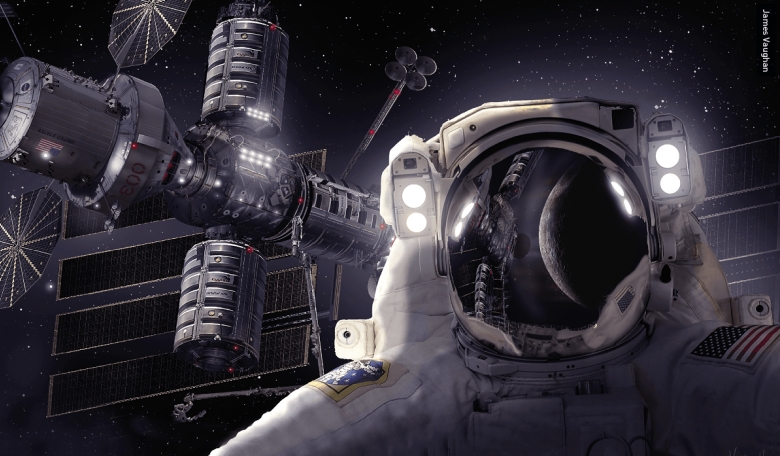The US House Appropriations Committee has today recommended a $25.04 billion spending bill to fund NASA through fiscal year 2022; this is an increase of $1.77 billion more than FY2021 and $240 million more than President Biden requested.
The bill includes $7.28 billion for Exploration, an increase of $723.9 million above FY 2021. The bulk of that is for the Space Launch System ($148.9 million) and the Exploration Ground Systems associated with SLS and Orion ($100 million); the framework needed if the agency is continue its efforts to eventually land the first American woman and person of colour on the surface of the Moon.
It also includes $7.97 billion for Science, an increase of $668.5 million above FY 2021. This is to continue efforts to explore the solar system, other planets, and other solar systems.
Included in the allocation was an added $34.8 million above the initial request for Mars Sample Return, $68.6 million more for Europa Clipper, and $175,400 for the James Webb Space telescope.
Aeronautics research was granted $935 million as part of the bill, whilst the $1425 million requested for Space Technology funding was cut by $145 million to $1280 million.
Of this, the bill specifies that $110 million is for development of nuclear thermal propulsion, despite NASA not submitting a request for NTP funding. This includes $75 million for “Moon to Mars Landing Demonstrations” to “allow industry to compete for public-private partnerships focused on high-level, NASA-defined objectives”.
Along with the US Department of Energy (DOE), the agency has recently awarded three 12-month $5 million contracts for reactor design concepts; systems that many see as a potential game-changer for exploration of the Solar System.
Of special interest to the Commerce-Justice-Science (CJS) bill, which also funds NOAA, the National Science Foundation and other related agencies, and the accompanying report by House appropriators, are funds relating to the Human Landing System (HLS).
Earlier this year, NASA controversially selected only one contractor – SpaceX – to proceed with development of a HLS that will take astronauts from lunar orbit down to and back from the Moon’s surface.
This was due to a lack of financial backing in FY2021 by US Congress who approved just $850 million instead of the $3.4 billion NASA asked for.
Although the House committee has expressed concerns in the report about NASA’s decision to select only one contractor, it has only added $150 million to the agency’s request: $1.345 billion instead of $1.195 billion - a budget which also funds the Gateway, Advanced Cislunar and Surface Capabilities, Advanced Exploration Systems, and the Human Research Programme.
This limited funding increase appears not nearly enough if NASA are to have two HLS systems ready in time for a 2024 Moon landing.
However, aiming to increase the budget for HLS is NASA’s new Administrator, Bill Nelson. During a testimony to the Commerce-Justice-Science (CJS) subcommittee of the House Appropriations Committee in May, Nelson campaigned for a further $5.4 billion to be added to the infrastructure/jobs bill to pay for the second HLS rather than trying to get it through regular appropriations, notes Marcia Smith at Spacepolicyonline.
“Specifically, we named about $5.4 billion on the Human Landing System, and that would be at the end of the day producing jobs…. And in addition, $200 million could go in the jobs bill for the Artemis [space]suits that we’ve got to continue to develop. That’s the EVA suits. And … about $585 million on the Moon to Mars thermal nuclear propulsion”, Nelson said at the meeting, according to Smith.
Meanwhile, in the midst of the FY2022 funding bill, NASA has also released the final announcement seeking proposals for building commercial low Earth orbit (LEO) space facilities to replace the International Space Station (ISS).
Instead of building another one itself, NASA wants commercial companies to build their own and is assisting the effort by providing funding for initial studies of commercial space stations that could ultimately be used by NASA through Public-Private Partnerships (PPPs).
The agency expects to award between two and four Space Act Agreements to support those studies, with up to $400 million available from FY2022 through 2025. Proposals are due to NASA by 26 August.











